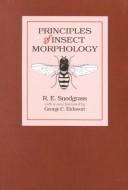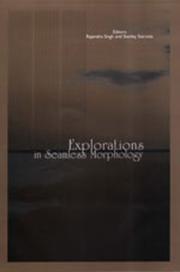| Listing 1 - 10 of 1044 | << page >> |
Sort by
|
Periodical
Year: 2008 Publisher: Bogotá, Colombia : Universidad Nacional de Colombia,
Abstract | Keywords | Export | Availability | Bookmark
 Loading...
Loading...Choose an application
- Reference Manager
- EndNote
- RefWorks (Direct export to RefWorks)
Book
Year: 2020 Publisher: Heidelberg : Heidelberg University Publishing (heiUP),
Abstract | Keywords | Export | Availability | Bookmark
 Loading...
Loading...Choose an application
- Reference Manager
- EndNote
- RefWorks (Direct export to RefWorks)
Bausteine einer Korpusgrammatik des Deutschen ("Building blocks towards a corpus grammar of German") is a series presenting corpus linguistic studies on German grammar conducted at the Leibniz Institute for the German Language in Mannheim (IDS). Using state-of-the-art corpus linguistic methodology, the series aims to capture the diversity and variability of German grammar at a high resolution. At the same time, it aims to ensure the study results are verifiable. Issue by issue, the series will add "building blocks" for a new, consistently corpus-based grammar of German. In addition to the peer-reviewed texts, which are written in the style of grammar chapters, the series publishes the results of statistical analyses and, for selected topics, the underlying data sets.
Book
ISBN: 3110548852 Year: 2017 Publisher: Berlin ; Boston : De Gruyter (A),
Abstract | Keywords | Export | Availability | Bookmark
 Loading...
Loading...Choose an application
- Reference Manager
- EndNote
- RefWorks (Direct export to RefWorks)
Die (sichtbare) Welt ist geprägt von einer unermesslichen Vielfalt von Formen, Mustern und Strukturen. Deren Betrachtung und Bewertung hat zu Methoden der Beschreibung, Darstellung, Analyse und Klassifikation geführt, welche für die Frage nach den Ursachen und Mechanismen von Formentstehung und Formwandel grundlegend wurden. Dabei steht die Form selbst auch für Funktionen, Prozesse und Konzepte, die über das bloß Sichtbare hinausweisen. "Morphologie" wurde zu einem Schlüsselwort für die Bezeichnung dieser Zusammenhänge. Der Themenband behandelt die unterschiedlichen Formen der Auseinandersetzung mit Phänomenen der Natur und Kultur, die von der Übersetzung sichtbarer Erscheinungen in die Sphäre der Sprache bis hin zu Verfahren der visuellen Übertragung reichen, welche den Zugang zur Form mitgestalten, etwa Zeichnungen, optische Instrumente, Modelle und Diagramme. Dabei zeigt sich, wie eng Objekt- und Konzeptforschung, Natur- und Geisteswissenschaften ineinandergreifen können, ohne ihre disziplinäre Präzision und Identität zu verlieren.

ISBN: 150171791X 9781501717918 0801428831 9780801428838 0801481252 9780801481253 Year: 2018 Publisher: Ithaca, NY : Cornell University Press,
Abstract | Keywords | Export | Availability | Bookmark
 Loading...
Loading...Choose an application
- Reference Manager
- EndNote
- RefWorks (Direct export to RefWorks)
This classic text, first published in 1935, is once again available. Still the standard reference in the English language, Principles of Insect Morphology is considered the author's masterpiece. A talented artist as well as one of the leading entomologists of his day, Robert E. Snodgrass produced a wealth of publications that display an accuracy and precision still unsurpassed.The 19 chapters in this volume cover each group of insect organs and their associated structures, at the same time providing a coherent morphological view of their fundamental nature and apparent evolution. To accomplish this aim, Snodgrass compares insect organs with those of other arthropods. Each chapter concludes with a glossary of terms. The 319 multipart illustrations are an invaluable source of information and have never been duplicated.This edition includes a new foreword by George Eickwort, Professor of Entomology at Cornell University, which relates the book to today's courses in insect morphology. Republication of this textbook will provide another generation of students with an essential foundation for their studies in entomology.
Insects --- Anatomy. --- Morphology. --- Morphology --- Anatomy
Book
ISBN: 9535169971 9535106147 Year: 2012 Publisher: IntechOpen
Abstract | Keywords | Export | Availability | Bookmark
 Loading...
Loading...Choose an application
- Reference Manager
- EndNote
- RefWorks (Direct export to RefWorks)
This book provides detailed and comprehensive coverage on various aspects of prenatal diagnosis-with particular emphasis on sonographic and molecular diagnostic issues. It features sections dedicated to fundamentals of clinical, ultrasound and genetics diagnosis of human diseases, as well as current and future health strategies related to prenatal diagnosis. This book highlights the importance of utilizing fetal ultrasound/clinical/genetics knowledge to promote and achieve optimal health in fetal medicine. It will be a very useful resource to practitioners and scientists in fetal medicine.
Morphology. --- Grammar, Comparative and general Morphology --- Morphology --- Medical diagnosis
Book
ISBN: 9780191955129 0191955124 Year: 2023 Publisher: Oxford : Oxford University Press,
Abstract | Keywords | Export | Availability | Bookmark
 Loading...
Loading...Choose an application
- Reference Manager
- EndNote
- RefWorks (Direct export to RefWorks)
This book constitutes the first typologically oriented monograph on morphomes, which is the term given to systematic morphological identities, usually within inflectional paradigms, that do not map onto syntactic or semantic natural classes like 'plural', 'past', 'third-person singular'. Its first half addresses the theoretical and empirical challenges surrounding the identification and definition of morphomes, and surveys their links with related notions like syncretism, homophony, blocking, segmentation, economy, morphophonology, etc. It also presents the different ways in which morphomic structures have been observed to emerge, change, and disappear from a language. The second part of the book contains its core contribution: a database with 120 morphomes across 79 languages from all around the world. These structures are first presented in painstaking philological detail, and then deconstructed into logically independent axes of variation, identified in the spirit of Multivariate Typology. Statistical analysis is then undertaken to spot trends and correlations which are subsequently discussed. Various findings, relevant to both proponents and detractors of Autonomous Morphology, have emerged regarding, for example, the idiosyncratic (i.e. not representative) nature of Romance morphomes, the existence of cross-linguistically recurrent unnatural patterns, and the preference for more natural structures even among morphomes. The database is also expected to allow explorations of other issues, such as how learnability and communicative efficiency pressures impact morphological structure, and lexical and grammatical informativity across the word.
Grammar, Comparative and general --- Morphology --- Morphology.

ISBN: 1282154133 9786612154133 8132102843 9788132102847 9781282154131 6612154136 0761995943 9780761995944 8178292238 9788178292236 Year: 2003 Publisher: New Delhi Thousand Oaks, Calif. Sage Publications
Abstract | Keywords | Export | Availability | Bookmark
 Loading...
Loading...Choose an application
- Reference Manager
- EndNote
- RefWorks (Direct export to RefWorks)
This volume exposes the inadequacies of morpheme or stem based theories of morphology and introduces the two versions (the Montreal version, called Whole Word Morphology, and the `lexicase` one) of a radically a-morphous morphology, somewhat mischievously designated, by Starosta, as `seamless morphology`. It also makes clear their many shared assumptions and principles as well as the differences between them. A number of contributors deal with `compounding` and `incorporation`, two of the toughest problems in maintaining the seamless position. Other contributions show the advantages of that po
Grammar, Comparative and general --- Morphology (Linguistics) --- Morphology. --- Linguistics --- Philology --- Grammar, Comparative and general Morphology --- Morphology
Book
ISBN: 1628089822 9781628089820 9781628083989 1628083980 Year: 2013 Publisher: New York
Abstract | Keywords | Export | Availability | Bookmark
 Loading...
Loading...Choose an application
- Reference Manager
- EndNote
- RefWorks (Direct export to RefWorks)
Are words really so determined by rules that, as Leonard Bloomfield once argued in defense of the ""morpheme-based"" morphology, ""word forms are analyzed as arrangements of morphemes,"" such that there are ""rules to combine morphemes into word forms, or to generate word forms from stems...""? (WK 2012) But there is an opposing approach to morphology known as the ""word-based"" morphology, which ""takes paradigms as a central notion,"" in that it ""states generalizations"" which categorize ""words...based on the pattern they fit into. This applies both to existing words and to new ones. Appli
Grammar, Comparative and general --- Morphology (Linguistics) --- Morphology. --- Linguistics --- Philology --- Grammar, Comparative and general Morphology --- Morphology
Book
ISBN: 1443861650 9781443861656 1443858161 9781443858168 1306875927 Year: 2014 Publisher: Newcastle upon Tyne, England : Cambridge Scholars Publishing,
Abstract | Keywords | Export | Availability | Bookmark
 Loading...
Loading...Choose an application
- Reference Manager
- EndNote
- RefWorks (Direct export to RefWorks)
This monograph is structured as a collection of clinical case studies all addressing the relationship between lexicon and morphosyntax. It shows that various less-studied aphasic syndromes - including Logopenic Primary Progressive Aphasia, Mixed Trascortical Aphasia, and Crossed Aphasia - and not only 'classic' Broca's Aphasia can enhance findings worthy of consideration in contemporary theoretical debates on the status of traditional categories, and particularly on the lexical/functional div...
Grammar, Comparative and general --- Morphology (Linguistics) --- Morphology. --- Linguistics --- Philology --- Grammar, Comparative and general Morphology --- Morphology
Book
ISBN: 8024629186 9788024629186 9788024628813 8024628813 Year: 2016 Publisher: Prague
Abstract | Keywords | Export | Availability | Bookmark
 Loading...
Loading...Choose an application
- Reference Manager
- EndNote
- RefWorks (Direct export to RefWorks)
Grammar, Comparative and general --- Morphology (Linguistics) --- Morphology. --- Linguistics --- Philology --- Grammar, Comparative and general Morphology --- Morphology
| Listing 1 - 10 of 1044 | << page >> |
Sort by
|

 Search
Search Feedback
Feedback About UniCat
About UniCat  Help
Help News
News